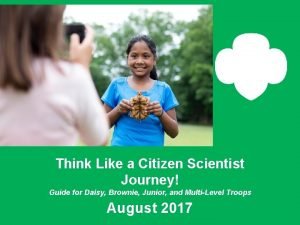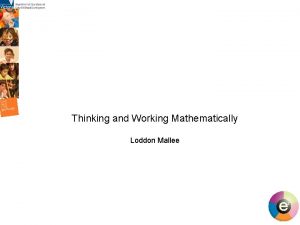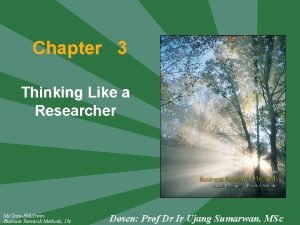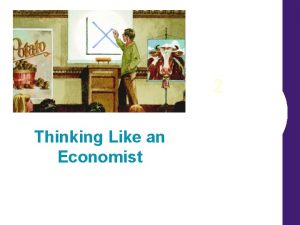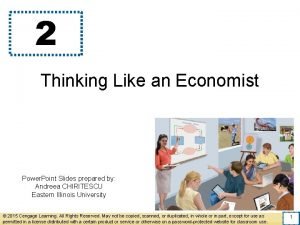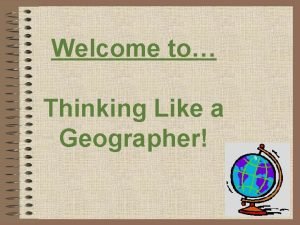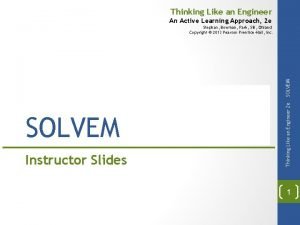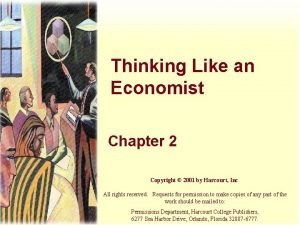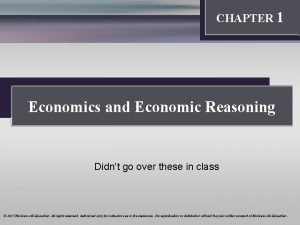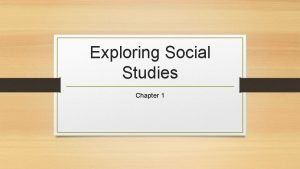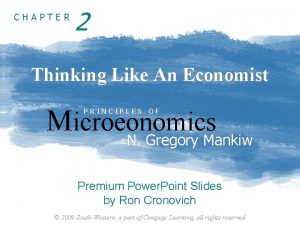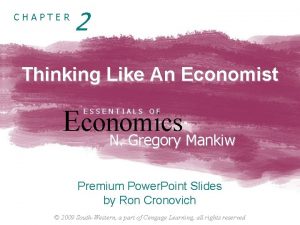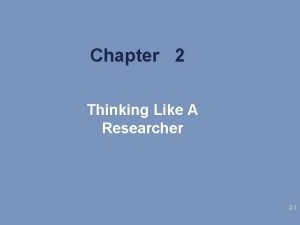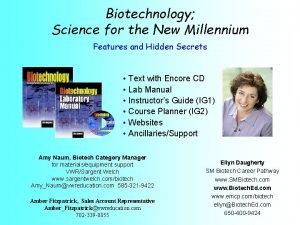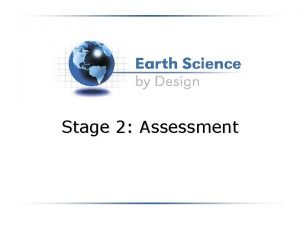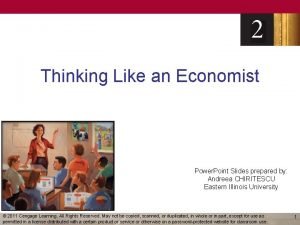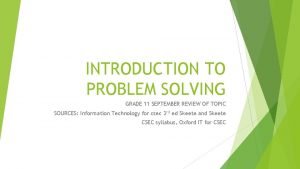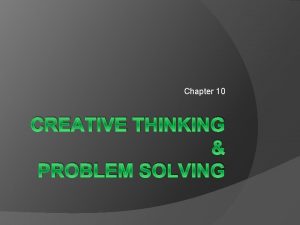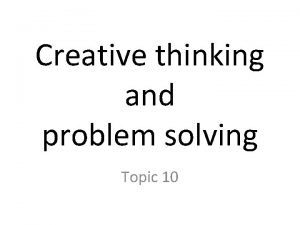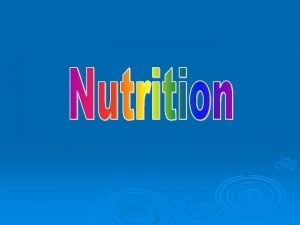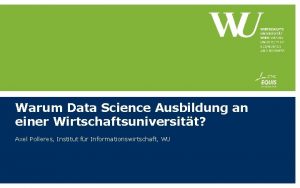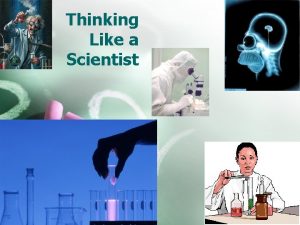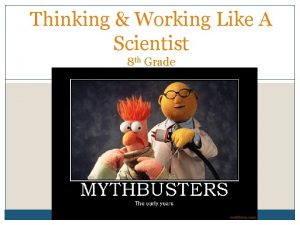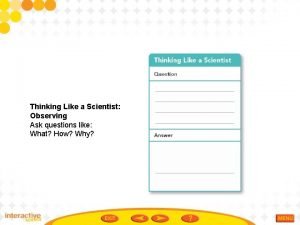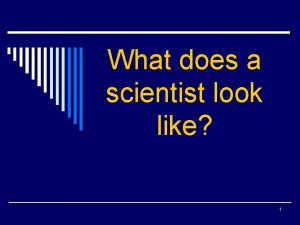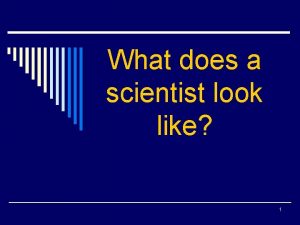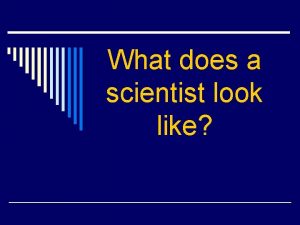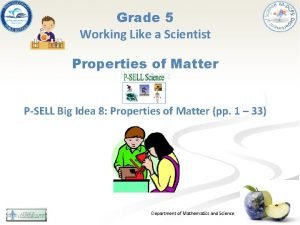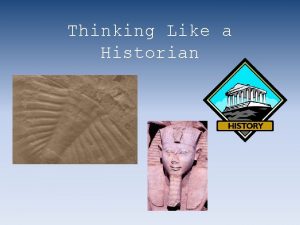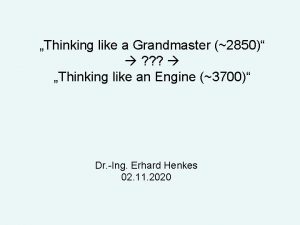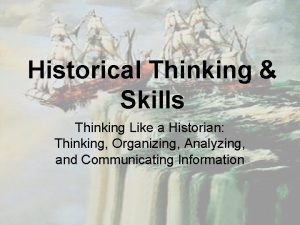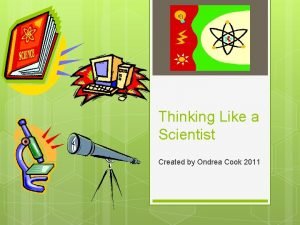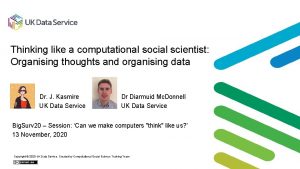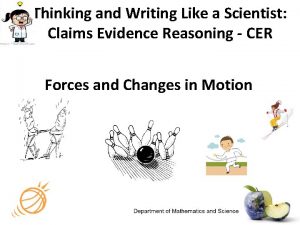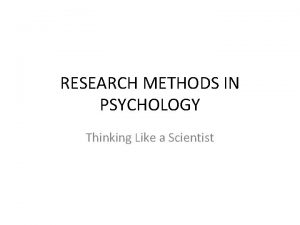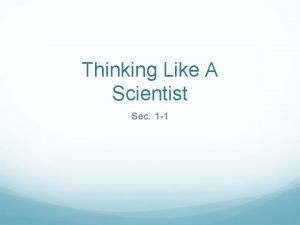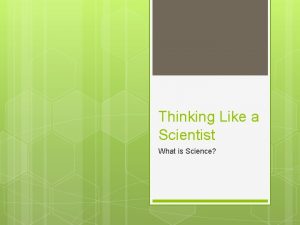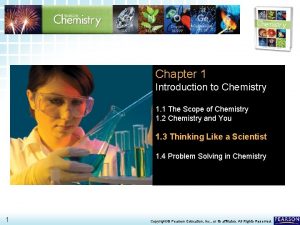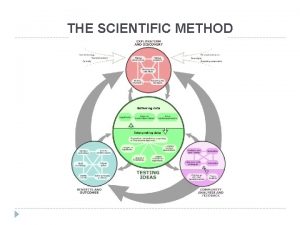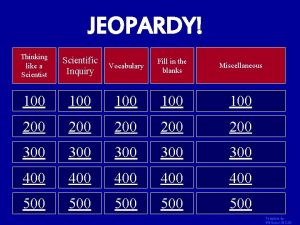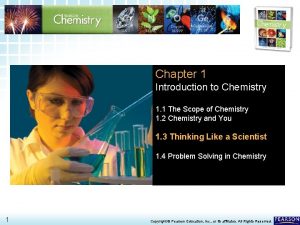Thinking Working Like A Scientist 7 th Grade































- Slides: 31

Thinking & Working Like A Scientist 7 th Grade

What is Science? Science is the investigation and exploration of natural events and of the new information that results from those investigations.

Scientific Inquiry When scientists conduct scientific investigations, they use scientific inquiry. Scientific inquiry- a process that uses a variety of skills and tools to answer questions. Scientists begin scientific inquiry with making observations and inferences Empirical evidence is the cumulative body of observations of a natural phenomenon on which scientific explanations are based.

Observation vs. Inference Observation The act of using one or more of your senses to gather information and taking note of what occurs. A logical explanation of an observation that is drawn from prior knowledge or experience Qualitative: Things you use your 5 senses to observe. What you see, feel, smell, taste, hear. Not expressed as a number and open to interpretation. Inference Quantitative: Measureable observations. Length, width, height, mass, large, heavy, etc. (Expressed as a number) Example: Students who study for tests earn better scores!

What is an example of a quantitative observation? A. THE PLANT HAS WHITE FLOWERS B. THE WHITE FLOWERS HAVE A NICE SMELL C. THE PLANT IS 15 CM TALL. D. THE PLANT HAS SMALL LEAVES.

Question or Problem What are you trying to find out? Also called the Purpose Stated in the form of a question.

Hypothesis Hypothesis-a possible explanation for an observation that can be tested by scientific investigations It is based on research and previous knowledge Often used to make a prediction which is a statement of what will happen next in a sequence of events. “If______ Then “ statement. Ex: If the soil is fertilized, then the growth rate of the tomatoes will increase.

Testing a Hypothesis Scientists test a hypothesis by doing one or more of these steps: Designing a controlled experiment Make a model Gather and evaluate evidence or research Collecting Data/Record Observations

Designing an Experiment VARIABLES

Designing a Controlled Experiment To design a controlled experiment, scientists identify factors that might affect the outcome of the experiment. Any factor that has more than one value is called a variable.

Types of Variables Independent variable: The thing you are testing. The one and only variable you allow to change. Dependent Variable: What you measure to compare the results of your test. Should be able to be charted or graphed. Constant: The variables that you don’t allow to change. What stays the same in each test. Control: Used for comparison

Which of these answers best describes a dependent variable? A. THE THINGS THAT STAY THE SAME FROM TEST A TO TEST B TO TEST C. B. THE VARIABLE THAT CHANGES FROM TEST A TO TEST B TO TEST C. C. THE THING THAT IS USED FOR COMPARISON. D. THE THING THAT YOU MEASURE

Identifying Variables Marshmallow Muscles Larry was told that a certain muscle cream was the newest best thing on the market and claims to double a person’s muscle power when used as part of a muscle-building workout. Interested in this product, he buys the special muscle cream and recruits Patrick and Sponge. Bob to help him with an experiment. Larry develops a special marshmallow weight-lifting program for Patrick and Sponge. Bob. He meets with them once every day for a period of 2 weeks and keeps track of their results. Before each session Patrick’s arms and back are lathered in the muscle cream, while Sponge Bob’s arms and back are lathered with the regular lotion. Which person is in the control group? What is the independent variable? What is the dependent variable? What should Larry’s conclusion be?

Procedures Step by step instructions for how to conduct the testing. Should be detailed enough that someone else could follow them and do exactly what you did. (Replication) The experiment should be repeated at least five times for valid results. (Repetition)

REPLICATION VS. REPETION Repetition (multiple trials) Replication (by others) Table 1: Plant Growth with Turbo. Gro by Trial Number Height after 5 Days (cm) 1 30 2 31 3 30 4 30. 5 5 31 AVE 30. 5 Dr. Square copied Dr. Groovy’s procedure and got similar results! The plants grew an average of 30 cm in 5 days! If scientific explanations are replicable, they are more valid and reliable.

Recording Data Very careful record keeping is essential for valid results. Use charts or tables to organize data. Records measurements as well as observations and things you want to remember about what happened.

Analyze the Results What are your results? What does the data show? Create charts, tables, and graphs to represent all of your data. Perform any calculations that will help you determine what the results mean. (i. e. averages, percentages, totals) What are the possible sources of error? (i. e. inaccurate measurements, contamination, etc. )

Draw Conclusions Scientists draw conclusions based on relationships among their data; a conclusion is a summary of the information gained from testing a hypothesis. What is the answer to your Question based on your results? Was your hypothesis supported by your experimental results? Why or why not? If you could do this experiment over again what would you do differently next time? What other experiments could you do to further test this?

Your results are not valid if. . . They are based on opinions rather than data. You draw conclusions that don’t logically follow the evidence. Your sample size is too small or is biased.

What do I do if my hypothesis is not supported by my experimental results? Recheck and Repeat! Then. . Check all the Start questioning again calculations and instruments used to measure. Repeat experiment at least 5 times. . . Why? ? Revise your hypothesis and start experimenting again!

RESULTS OF SCIENCE A scientific investigation can result in: New technology-practical use of scientific knowledge, especially for industrial or commercial use. New materials, such as those developed New explanations as to why or how something occurs

Models A Model is a representation of an object, process, system, or event that is similar to the original object or idea. They scientists better understand objects/ideas; allow hands-on contact with matter that is too small, too large, too far away, too dangerous, or too expensive to build Models can be: Physical/visual Conceptual Mathematical

MODEL BENEFITS & LIMITATIONS Benefits • Used to study matter that is too large, too small, too far away, too dangerous, or too expensive to study directly • Models can be physical, mathematical, computer simulations, or conceptual • Can be used to make predictions Limitations • May lack details • May not be composed of the original material (model of the Sun) • May not be able to demonstrate every aspect of the system

EXPERIMENT VS. OTHER FORMS OF SCIENTIFIC INVESTIGATION Not all scientific knowledge is derived from experimentation Experiment – involves identification and control of variables Ø Independent variable/test variable/manipulated variable Ø Dependent variable/outcome variable/responding variable Ø Controlled variables Simulation – imitating a real situation or process Field Study – observe a natural habitat without manipulating variables

Theories and Laws

SCIENTIFIC THEORY vs. SCIENTIFIC LAWS THEORY LAW • Evidence-based explanation based on observations of events • Patterns in nature derived from scientific fact • Tested and supported with multiple lines of evidence • Describe how the natural world behaves under certain conditions • Widely accepted and strongly supported by the scientific community • Describes an event but it does NOT explain it! • Can be used to make predictions • Can be expressed as a mathematical equation appens h T A H W e ib Laws descr • Can be modified if new evidence becomes available in WHY a l p x e s e i Theor pens p a h g n i h somet

EXAMPLES OF SCIENTIFIC THEORIES Theory of Evolution. All life on Earth shares a common ancestor. There is “decent with modification. ” Evidence – Fossil Record, Genetic Studies, Radiometric Dating, Stratigraphy Theory of Plate Tectonics Evidence – Sea Floor Spreading, distribution of earthquakes and volcanoes, Fossils

EXAMPLES OF SCIENTIFIC LAWS Newton’s Laws of Motion Universal Law of Gravity Law of Conservation of Energy Law of Conservation of Mass

What is the difference between a scientific theory and a scientific law? A. SCIENTIFIC THEORIES EXPLAIN WHY SOMETHING HAPPENS, AND SCIENTIFIC LAWS DESCRIBE WHAT HAPPENS. B. SCIENTIFIC THEORIES REQUIRE SCIENTIFIC EVIDENCE AND SCIENTIFIC LAWS DO NOT. C. SCIENTIFIC THEORIES ARE BASED ON OBSERVATION, AND SCIENTIFIC LAWS ARE BASED ON OPINIONS. D. SCIENTIFIC LAWS ARE FREQUENTLY MODIFIED, BUT SCIENTIFIC THEORIES ARE RARELY CHANGED AS NEW INFORMATION BECOMES AVAILABLE.

Remember… Scientific knowledge can change as new evidence or interpretations arise It was a widely held belief that the Earth was the center of the Universe until the 1500 s Theories may be modified, but are rarely discarded

 Think like a citizen scientist journey requirements
Think like a citizen scientist journey requirements Smart work and hard work
Smart work and hard work Hot hot
Hot hot Hot working and cold working difference
Hot working and cold working difference Machining operations
Machining operations Proses pembentukan logam
Proses pembentukan logam Open ended maths activities peter sullivan pdf
Open ended maths activities peter sullivan pdf Positive thinking vs negative thinking examples
Positive thinking vs negative thinking examples Thinking about your own thinking
Thinking about your own thinking Linear thinking vs holistic thinking
Linear thinking vs holistic thinking Perbedaan critical thinking dan creative thinking
Perbedaan critical thinking dan creative thinking Thinking about you thinking about me
Thinking about you thinking about me Think like a researcher
Think like a researcher Thinking like an economist summary
Thinking like an economist summary Thinking like an economist ppt
Thinking like an economist ppt Think like a geographer
Think like a geographer Thinking like an engineer: an active learning approach
Thinking like an engineer: an active learning approach Thinking like an economist chapter 2
Thinking like an economist chapter 2 Thinking like an economist chapter 1
Thinking like an economist chapter 1 Exploring social studies lesson 1 thinking like a historian
Exploring social studies lesson 1 thinking like a historian Chapter 2 thinking like an economist
Chapter 2 thinking like an economist Chapter 2 thinking like an economist summary
Chapter 2 thinking like an economist summary Thinking like a researcher
Thinking like a researcher Thinking like a biotechnician
Thinking like a biotechnician Thinking like an assessor
Thinking like an assessor Thinking like an economist chapter 2
Thinking like an economist chapter 2 Creative thinking and problem solving grade 11
Creative thinking and problem solving grade 11 Comparative relational thinking
Comparative relational thinking How to solve this problem
How to solve this problem Creative thinking and problem solving grade 10
Creative thinking and problem solving grade 10 Food scientists measure food energy in
Food scientists measure food energy in Data science ausbildung wien
Data science ausbildung wien
